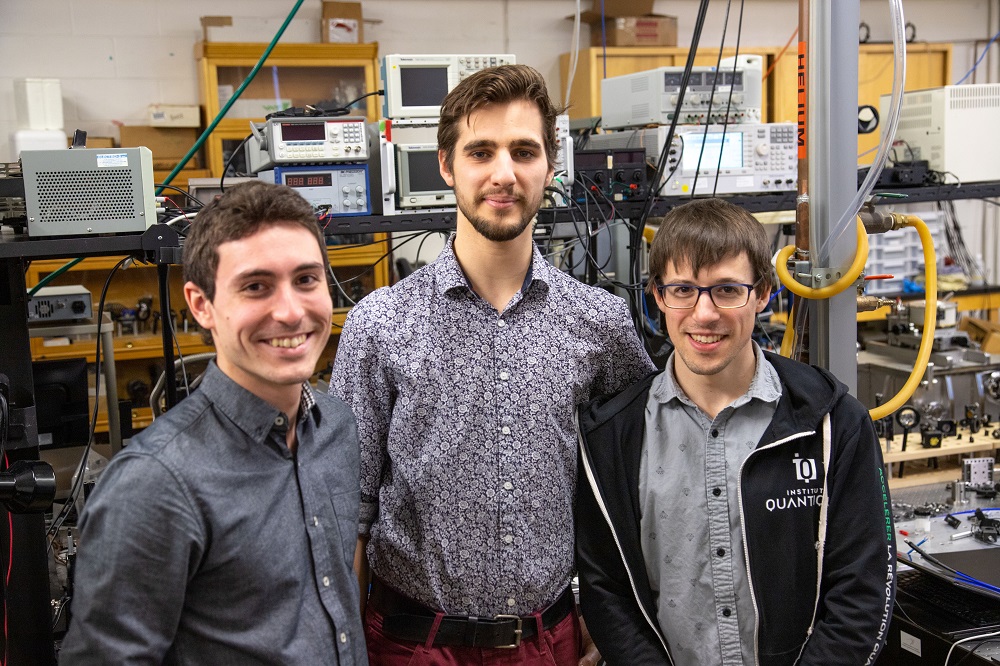Dr. David Roy-Guay and his team at the Université de Sherbrooke are using diamonds to find more diamonds.
The postdoctoral fellow-turnedentrepreneur is developing a quantum sensor for the mining sector, a technology that grew out of his work on a diamond-based magnetometer as a PhD student.
Today that research is showing promise in a broad variety of applications, including outer space.
Magnetometers detect changes in Earth’s magnetic field. Inexpensive versions of these devices are commonly found in mobile phones and tablets, where they automatically rotate digital maps, helping the user to orient themselves.
The diamond-based prototype developed by Roy-Guay and his team is far more sophisticated, combining lasers, microwave circuits, and photodetectors. It is sensitive enough to detect very subtle changes in Earth’s magnetic field caused by kimberlites, the dark igneous rocks that often contain diamonds.
Beyond mining, possible applications extend to monitoring the integrity of pipelines and other structures, and in search and rescue, where magnetometers can be used to spot the magnetic signature of planes or helicopters that have crashed in a forest, jungle or ocean. The technology also has potential applications for quality assurance in electronics and processors for quantum computing.
CAD solutions, provided by CMC Microsystems, were essential to his project, Roy-Guay says. “Without access to simulation and design licenses, this never would have happened,” he says.
The potential of this work has already been recognized. In 2016, the Institut Quantique, established under the prestigious federal Canada First Research Excellence Fund (CFREF), awarded Dr. Roy-Guay’s team $150,000 to prototype a diamond-based magnetometer.
Last year, the magnetometer was chosen to be part of the Canadian Space Agency’s CubeSat Project, in which student teams across Canada develop miniature satellites carrying scientific instruments for doing research in space.
Guided by Dr. Roy-Guay, students will miniaturize the quantum sensor to travel aboard QMSat, Université de Sherbrooke’s first satellite to reach space. The 10 cm by 10 cm device will be used to measure magnetic fields in space, leading to better assessment of solar storms on radio communications, GPS, and electrical networks. QMSat will be launched from the International Space Station in 2021.
The National Research Council’s Flight Research Lab in Ottawa is currently helping to test his device in magnetically controlled environments and eventually aboard a plane. As he prepares his technology for space, Roy-Guay is continuing to develop his magnetometer for other applications through his aptly named new company, SB Technologies.
‘Without access to simulation and design licenses, this never would have happened’
“SB is for shine bright,” he says. Our goal is to make the technology smaller, to get it more power efficient and integrate it into robots or drones to do field surveys.” Possible applications include monitoring buried pipelines for leaks, and protecting endangered wildlife from poachers.
“The future is challenging, but we have very exciting developments coming up.”
Photo Credit: Reinier deSmit, Brilliant Eye
May 2019

